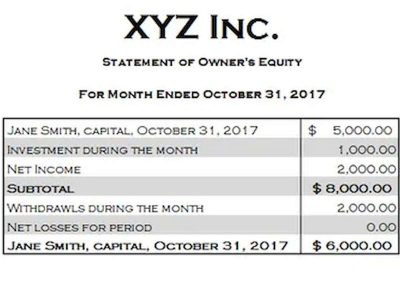.jpg)
In some cases, prices cannot be negotiated down to meet the last purchase price (LPP) in the presence of external market issues. Strategic sourcing can have a positive impact on purchase price variance by helping companies to improve their procurement processes and negotiate better prices with suppliers. By identifying variances in purchase prices, companies quickly spot inefficiencies or what is purchase price variance unexpected cost increases.
How do you calculate purchase price variance in SAP?
The direct materials price variance of Hampton Appliance Company is unfavorable for the month of January. This is because the actual price paid to buy 5,000 units of direct material exceeds the standard price. Sales price variance and labor price variance are vital for assessing the effectiveness of pricing strategies and managing labor costs. By analyzing these variances, companies can identify areas that may require adjustments to improve profitability and operational efficiency. The calculation for direct materials price variance involves subtracting the actual cost of materials from the standard cost, then multiplying by the quantity purchased.
By evaluating supplier performance in relation to PPV, you can make data-driven decisions about whether to extend or renegotiate contracts. Market shifts are a key external factor that companies should consider when budgeting. The market price of some raw materials or services might drop due to factors outside of the company’s control, allowing them to purchase more – or perhaps reflecting a lower average quality available. Let’s remember, for example, how the prices for travel services dropped during and immediately after the COVID-19 crisis. Purchase price variance is also a precise indicator of how accurate a company’s budgeting and financial planning are. When the company budget is created, the exact price for each purchase isn’t yet confirmed, so the procurement managers need to estimate as best they can.
Overall, your procurement method becomes a part of your day-to-day business and no longer causes issues to your organisation when it comes to variance in purchase price. The standard price is the price that engineers believe the company should pay for an item, given a certain quality level, purchasing quantity, and speed of delivery. Thus, the variance is really based on a standard price that was the collective opinion of several employees based on a number of assumptions that may no longer match a company’s current purchasing situation.
- In any manufacturing company Purchase Price Variance (PPV) Forecasting is an essential tool for understanding how price changes in purchased materials affect future Cost of Goods Sold and Gross Margin.
- One of the primary reasons for tracking PPV is to maintain tight control over purchasing expenses.
- Negative PPV is considered savings and thus good performance from the procurement organization.
- PPV Dashboard or Purchase Price Variance Report by Simfoni makes it easy to track Purchase Price Variance.
- It’s essential to be aware of these factors to make informed decisions about your spending.
Essential Points on Price Variance Management
Moreover, understanding the broader implications of price variance strengthens a company’s ability to respond to market changes and maintain financial stability. A positive PPV indicates cost savings, while a negative PPV highlights overspending. Tracking this variance is critical for procurement teams to analyze cost fluctuations, supplier dynamics, and the effectiveness of their purchasing strategies.
Everything you need to know about procurement savings here!
At the same time, PPV helps identify suppliers who consistently deliver products at or below the expected cost. Minimizing orders from the former suppliers and maximizing from the latter can seriously improve the company’s cost efficiency and lead to long-term savings and improved profitability. After the company makes a purchase, procurement specialists can compare the actual cost against the budgeted cost. The smaller the variance of the purchase price, the more accurate the estimate was. What if we told you that you can drastically improve overall business profitability by looking at one specific procurement metric?
Accurate capacity planning and forecasting are essential in committing to multi-year agreements. Work collaboratively with suppliers to negotiate better terms, improve communication, and establish trust. Supplier performance reviews, based on PPV analysis, can strengthen partnerships. It is the difference between the standard or baseline price and the actual amount paid for a service or an item to purchase. It can be either unfavorable or favorable, which could be tracked monthly, quarterly, or yearly.
A price variation of $0.50 per piece and a variation of $4,000 were created for all purchased parts. Changes to supplier programs or new conditions on discount could result in undesirable price changes for goods. Through effective negotiation, such changes may be mitigated via supplier-side discounts as licensing volume increases. I have a deep passion for procurement, and I’ve upskilled over 200 procurement teams from all over the world. In a large enterprise with multiple source systems for forecast data, tens of thousands of material numbers to be forecasted and a score of plants and business units involved in the process.
Factors that Positively Affect the Purchase Price Variance
The knowledge of price variance in goods and services also sheds light on the effectiveness of cost-saving measures. PPV can indicate the success of procurement initiatives when analyzed in the appropriate context. With Forecasted PPV business units gain the much-needed visibility on how material price changes are expected to erode gross margins. Hence, budgeting and following up on material prices is a key job of any finance function in this type of business. Modern procurement technology plays a significant role in managing PPV by streamlining processes and providing real-time data. Tools like procurement software and spend analysis platforms help organizations gain deeper insights into their purchasing.
.jpeg)
Therefore, its effectiveness can be improved by sharing the company’s historical data, with the costs and margins of the suppliers being passed on to the buyer. In the evolving field of procurement, one term that consistently stands out for its strategic importance is Purchase Price Variance (PPV). PPV isn’t just a financial metric; it’s a powerful tool that provides deep insights into purchasing strategies, supplier performance, and cost control. Organizations that master PPV can unlock significant advantages in cost management and overall procurement success. This blog dives deep into the concept of Purchase Price Variance, its calculation, factors influencing it, and actionable strategies to leverage it effectively. Price variance refers to the difference between the actual price paid for a product, material, or service and the expected price for that exact item.
External factors such as supply chain delays can influence pricing, and sometimes, prices cannot be negotiated down to match the last purchase price due to these market conditions. Purchase Price Variance (PPV) is a key performance indicator (KPI) that procurement specialists and finance professionals use to monitor cost efficiency in purchasing activities. It measures the difference between the actual price paid for a product or service and the standard price that was expected. Rather than just identifying cost discrepancies, PPV is a barometer for market responsiveness, operational efficiency, and purchasing strategies.
PPV in finance budgeting
Moreover, department managers have the responsibility of handling the variances arising from purchases in a firm. Moreover, it helps companies make appropriate decisions while deciding the number of items to order from the supplier. It could be used for both revenue and cost so a firm can evaluate and manage its revenue plus price in a better manner. Hence, this concept is used in cost accounting and financial management to assess the impact of cost fluctuations on a company’s financial performance. Maverick spend or spending is a contributor to unfavorable purchase price variance in an organization. These increased prices are outside of the purchasing company’s control, and sometimes outside of even the supplier’s control.
بیشتر بخوانید.jpeg)
.jpg)
.jpg)





.jpeg)
.jpg)













